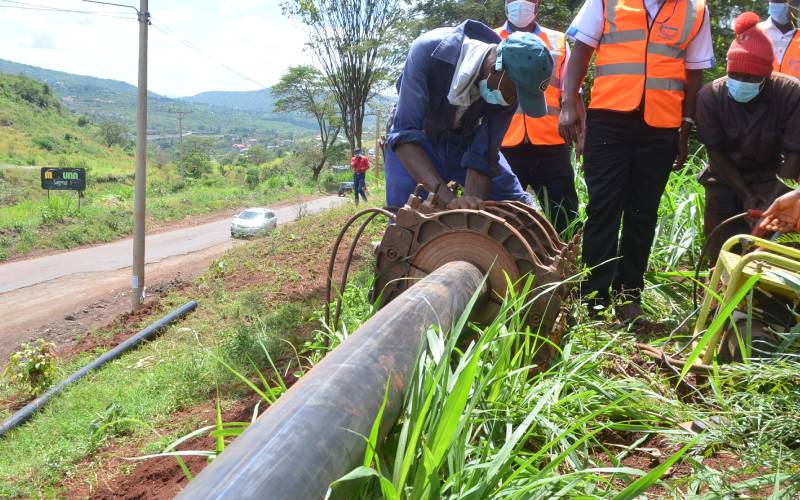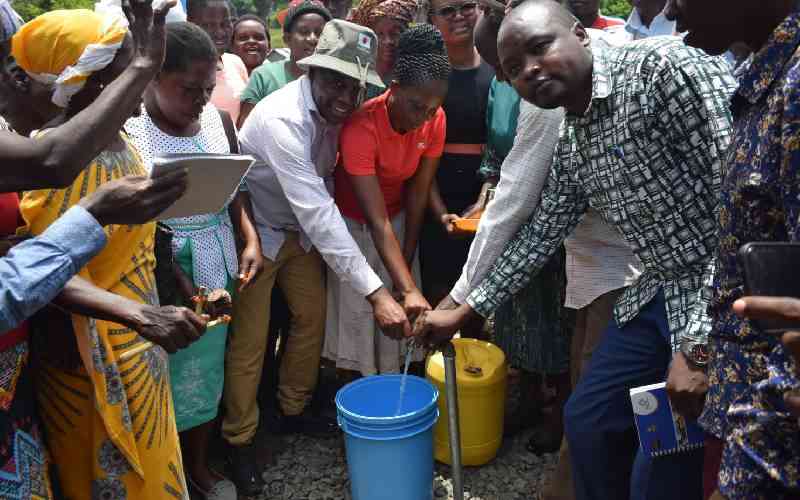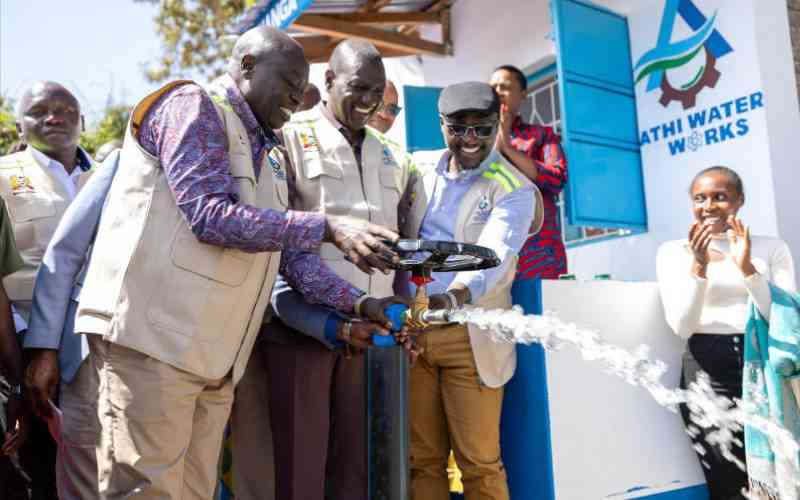
Communities in Kenya’s Arid and Semi-Arid Lands (ASALs) are often hard-hit by prolonged dry seasons, causing acute water shortage and subsequent suffering for both humans and livestock.
Like other areas, Korbesa and Mata-Arba locations in Isiolo North Subcounty have not been spared, with water shortage and its consequences worsening amid climate change.
However, after over 50 years of struggle for these residents, it is a new dawn after development partners established a fresh-water borehole that is supplying water to over 1,600 households totaling to about 8,000 persons.
The project also supplies water to an estimated 5,000 cattle and a similar number of goats and sheep. Keeping livestock, especially the breeding herds close home ensures a stable supply of milk thus impacting positively on family diet and nutrition.
A partnership between the National Drought Management Authority with funding from the European Union, Northern Water Works Development Agency and County government of Isiolo has brought to a stop water struggles for communities in this area.
Solar power
The Sh96 million Korbesa water supply project runs from a borehole drilled at Merti with an hourly yield of 35 cubic meters per hour.
Initially, partners would spend about Sh50m annually on water trucking, resources which have since been saved thanks to the Korbesa water supply project.
“Solar energy is used to pump water from the borehole to various centers and a booster tank located 13km away,” says Mr Lordman Lekankuli, the NDMA County Drought Coordinator for Isiolo.
Although the same is connected to the national grid, relying on solar energy does not only save on cost but is also a way of utilizing green energy.
Drawing from lessons learnt from similar projects which did not succeed, high-density connection pipes were used to supply water from the borehole to the reservoir and to villages 25km away.
A 225 cubic meters (225,000 liters) – capacity booster tank located near Mata-Arba from where water is pumped to nearby villages including Mata-Arba, Riga, Saleti and Korbesa. Plans are underway from the county government to extend water supply to Biliqi settlement as was targeted in the initial project plan.
Long walks
Women in this area recall having to walk long distances in search of water, and how they would leave at dawn only to return at dusk.
Stay informed. Subscribe to our newsletter
“We used to rely on hand-dug wells in dry river beds and would often experience conflicts between those fetching water for household use and herders as each sought to be first at the well,” recalls Nuria Tari, 48.
Children, she adds, were left alone at home as their mothers went to search for water. However, with a watering point being a stone’s throw away from the village, they now spend more time with their children and husbands.
Nuria adds that she used to spend an average of Sh75 daily on water when she could not go fetching for the same, but has since diverted the money to catering for her household needs.
At the age of 50, Halima Wako cannot carry a jerrican of water though the distance from the watering point to her home is barely 200 meters. She associates a chronic backache to the long trekking distance in search of water during her younger years.
“Some women would lose pregnancies while walking either to or from the wells,” recalls Halima, adding that women would barely have time for rest as they were either fetching water or attending to household chores.
Minimise conflict
Mata-Arba Senior Chief Ibrahim Huka recalls how he would often have to solve conflict cases as communities differed over water which had been a scarce commodity.
“I used to have many sittings with elders as some conflicts were between communities from two locations, but the fights have since ended as water is now in abundance,” recalls Mr. Huka.
At a nearby health center, it was a nightmare especially for new mothers who would have to recycle bathing water or sometimes go without showering. This too has become history, thanks to the new water project.
In addition to connection to villages, a total of four schools have benefited from this water project. This has not only boosted school attendance and enrollment, but students especially under the new Competency-Based Curriculum can now execute projects that require water.
At Mata-Arba Primary School for example, pupils in grade four enjoy watering their vegetable kitchen gardens-thanks to water availability.
Additionally, the school feeding programme has become more efficient as previously sometimes there was food but no water to cook it.
In the wake of Covid 19 pandemic and protocols that come with it, students in this area have ample handwashing points unlike before.
 The Standard Group Plc is a
multi-media organization with investments in media platforms spanning newspaper
print operations, television, radio broadcasting, digital and online services. The
Standard Group is recognized as a leading multi-media house in Kenya with a key
influence in matters of national and international interest.
The Standard Group Plc is a
multi-media organization with investments in media platforms spanning newspaper
print operations, television, radio broadcasting, digital and online services. The
Standard Group is recognized as a leading multi-media house in Kenya with a key
influence in matters of national and international interest.
 The Standard Group Plc is a
multi-media organization with investments in media platforms spanning newspaper
print operations, television, radio broadcasting, digital and online services. The
Standard Group is recognized as a leading multi-media house in Kenya with a key
influence in matters of national and international interest.
The Standard Group Plc is a
multi-media organization with investments in media platforms spanning newspaper
print operations, television, radio broadcasting, digital and online services. The
Standard Group is recognized as a leading multi-media house in Kenya with a key
influence in matters of national and international interest.









